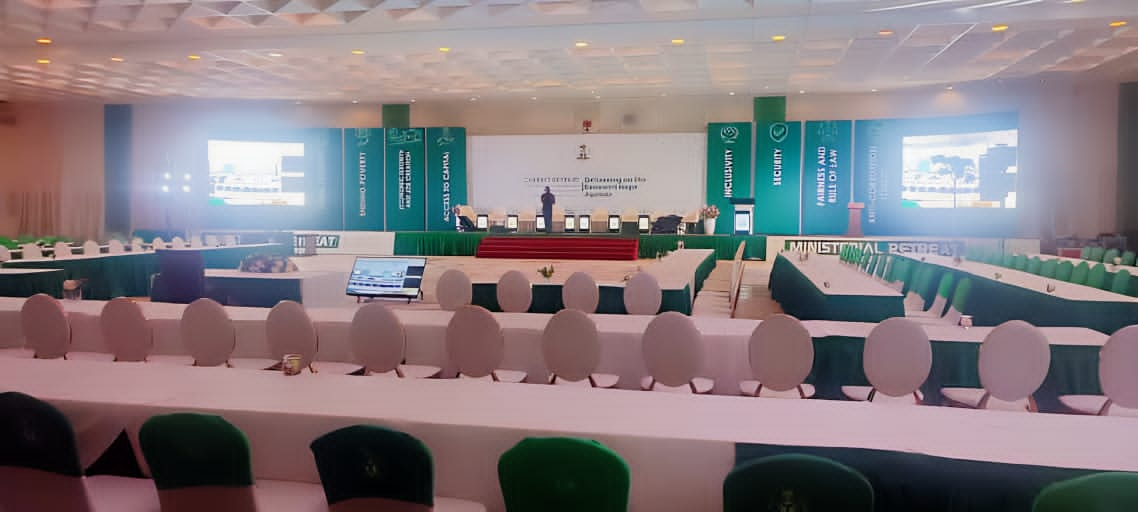BY OPEOLU STEPHEN AKINOLA
Sighted candidates have been sitting the Universal Tertiary Matriculation Examination (UTME) through Computer-based Testing (CBT) since 2013 but visually impaired candidates still take the same examination as Paper-based Testing (PBT) 10 years after.
Interestingly, digital devices for computer-based testing of the visually impaired were initially introduced by JAMB in 2015 using a combination of the BrailleNote Apex as an electronic Braille display and the Non-Visual Desktop Access (NVDA) screen reading software to allow the candidates to use Braille or speech options in accessing their questions and inputting answers. Unfortunately, that programme has been discontinued since 2017 in the guise of creating “equal opportunities”, a direct opposite of how visually impaired persons are being affected.
Each year since 2017, JAMB organises special centres where visually impaired students use slates and styluses or manual typewriters to write their answers while a sighted person reads out the questions to the group on a public address system. Visually impaired persons who took the examinations as far back as the early 2000s are incredulous about the fact that there are no more Braille copies of question papers like the ones that they had read on their own when they sat the exam. This is because JAMB purchased computerized Braille production equipment and was already producing their own question papers in Braille before 2008.
Advertisement
As a visually impaired Assistive Technology/ICT expert who has been working with global organisations to achieve the digital inclusion of visually impaired persons, I’ve found that the restriction of visually impaired students from using ICT in education leads to their later exclusion from the highly digitised job market. Even promotion examinations in the federal civil service are now computer-based.
Paper-based testing (PBT) for visually impaired candidates goes contrary to the evidence because the examination body successfully conducted computer-based testing for them in 2015 and 2016. Furthermore, 71% of those who took the exam as a CBT in 2016 gained admission to tertiary institutions compared with only 45% from paper-based testing in 2017.
Considering the availability of ever cheaper and more effective technology that enhances digital access for the visually impaired, it is very likely that JAMB would have overcome the initial challenges they faced in adopting CBT for visually impaired persons just as they did for the sighted if they had continued the project in the last eight years.
Advertisement
From various media stories on the issue, the most consistent reason given by JAMB for abolishing CBT of visually impaired candidates is that the students in most parts of the country do not have the digital skills and exposure to take such a test. However, a comprehensive investigation of the circumstances by a leading news agency as far back as 2015 shows that there were secondary schools and exam preparation centres in all the six geo-political zones which had already acquired needed technology and prepared their candidates. Since then many visually impaired persons have learnt basic ICT skills with the use of mobile phones and computers and even gone on to form a technology user group on which they share ICT knowledge.
Whatever reasons JAMB has for perpetuating the digital exclusion of the visually impaired, the widening gaps in opportunity and performance being created between visually impaired students and their sighted colleagues in tertiary institutions and in employment puts the visually impaired at an unjustifiable disadvantage.
From a human rights angle, the practice is at variance with the Discrimination Against Persons with Disabilities (Prohibition) Act 2018, the UN Convention on the Rights of Persons with Disabilities (CRPD) and even the Sustainable Development Goals (SDG), all of which demand the equal participation of persons with disability in every aspect of life.
A fraction of the annual amount they remit to the federal government treasury each year would definitely be enough to overhaul the obsolete form of paper-based testing for visually impaired persons that the exam body is determined to sustain. JAMB has the means to empower the visually impaired for inclusion in a digital world while complying with all relevant legal instruments.
Advertisement
For visually impaired persons who are subject to such harmful pity, daily experiences of discrimination as a result of digital disempowerment confirm the age-old truism that teaching a person to fish is more impactful than giving them a meal of fish.
Akinola is a blind certified professional in Accessibility Core Competencies (CPACC), M. A. Disability Studies, a member of the International Association of Accessibility Professionals and CEO of Accesstech Innovation.
Views expressed by contributors are strictly personal and not of TheCable.
Add a comment






